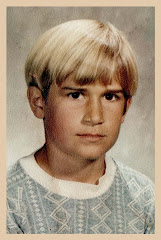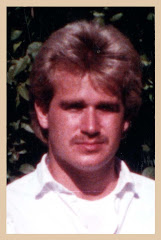
An artist receives inspiration from many places. Sometimes a work is completed in mind before the brush ever touches canvas. At other times, experimental avenues can lead to interesting discoveries.
What started out as a experiment a decade ago has now become something of a tradition, and a recurring motif. My love of the ocean and the innocence of my children has led me to create several works capturing them playing in harmony with the aquatic world. To my mind and memory surfing embodies both visceral and ethereal connections to the primal and the cosmic. One is awakened in an instinctual wave of corporeal energy, while the mystic element invades the soul in sublime experience. It is quite ineffable--especially when surrounded in a vortex of moving water to emerge from the tube as if from the womb of mother earth herself. My latest work Blue Baby (pictured above) is another stab at capturing that wondrous ecstasy, awe, and innocence.
The hyperreal effect of this motif is achieved by merging digital photography, 3D rendering, and painting techniques. Interestingly, many people have a mistaken notion about digital art--they think that the computer somehow does all the work. This is not the case at all. Even rendering in 3D is more involved than pressing a button. It is not unlike sculpting, combining bits and pieces of basic shapes, adding and editing textures, creating virtual camera angles, etc. In fact, 3D rendering is a great tool for subject study, composition, perspective, and lighting schemes. Likewise, taking photos of subjects is as useful as live models and locations. Moreover, the main difference between digital painting and classic techniques is that you don’t have to clean your brushes. Nevertheless, both have their advantages.
In the real world, it is difficult for an artist to explore every possible tone, hue, and/or perspective. Few painters can explore a subject while hovering in a helicopter or lying prostrate on the ground, but the 3D environment frees one’s perspective to float in mid air, or descend to a rat's eye view, to alter tone, lighting, and texture with ease. Even abstracts can be enhanced by such studies--mixing multiple perspectives on a subject. Such aesthetics can be accentuated by exploring perspectives with the greatest visual impact and reducing them to their most fundamental elements, to communicate to the viewer perception often on a subconscious level.
While 3D rendering tries to emulates the rules of the physical universe, one soon learns that the mind wants to supplement that realism. Whether creating abstracts or hyperrealism, each artist projects their mental filters onto the canvas, or into the medium to serve aesthetics. In the end, a tool is simply a tool, while the essence of art is an invention of mind and imagination.















